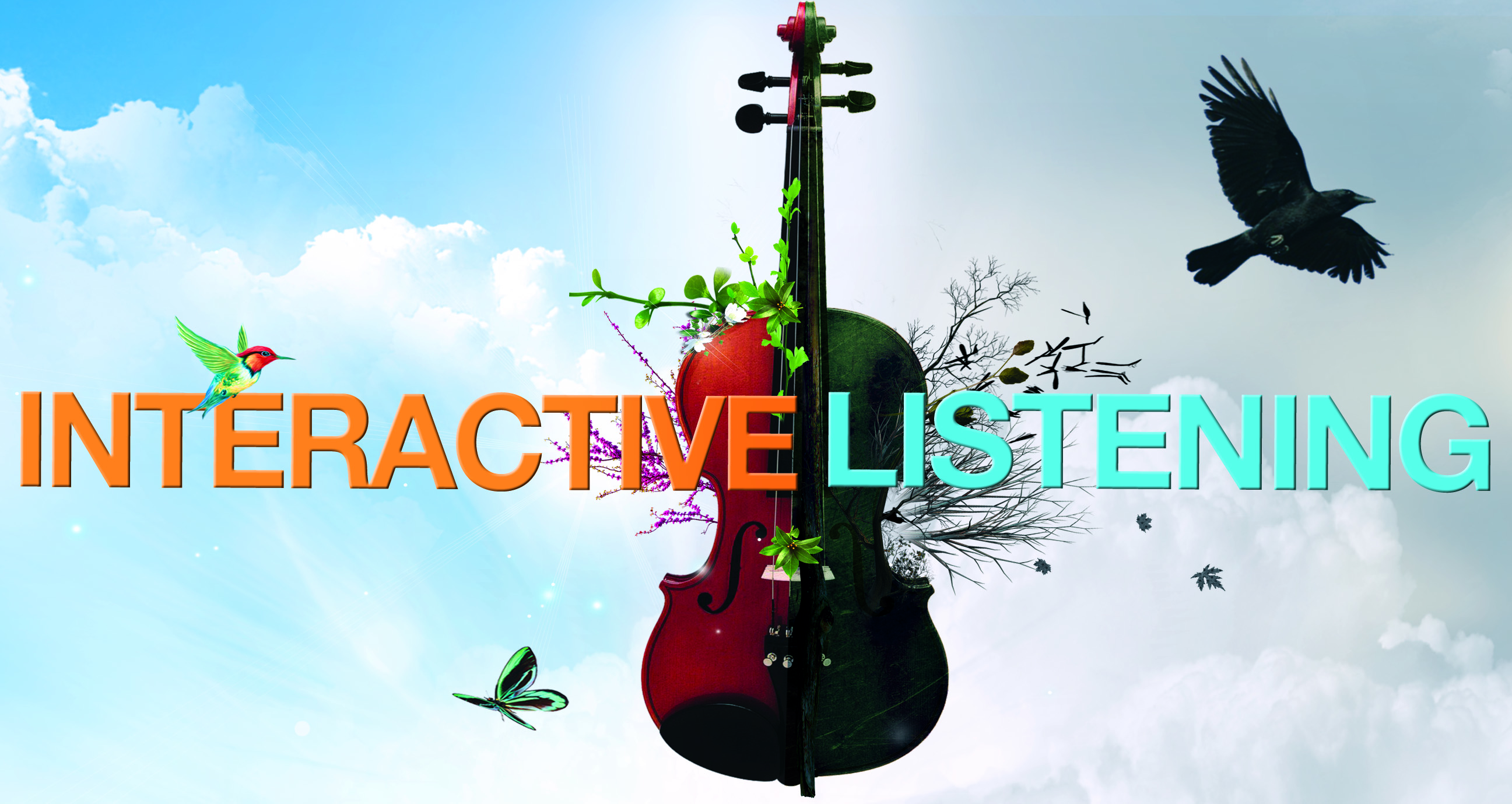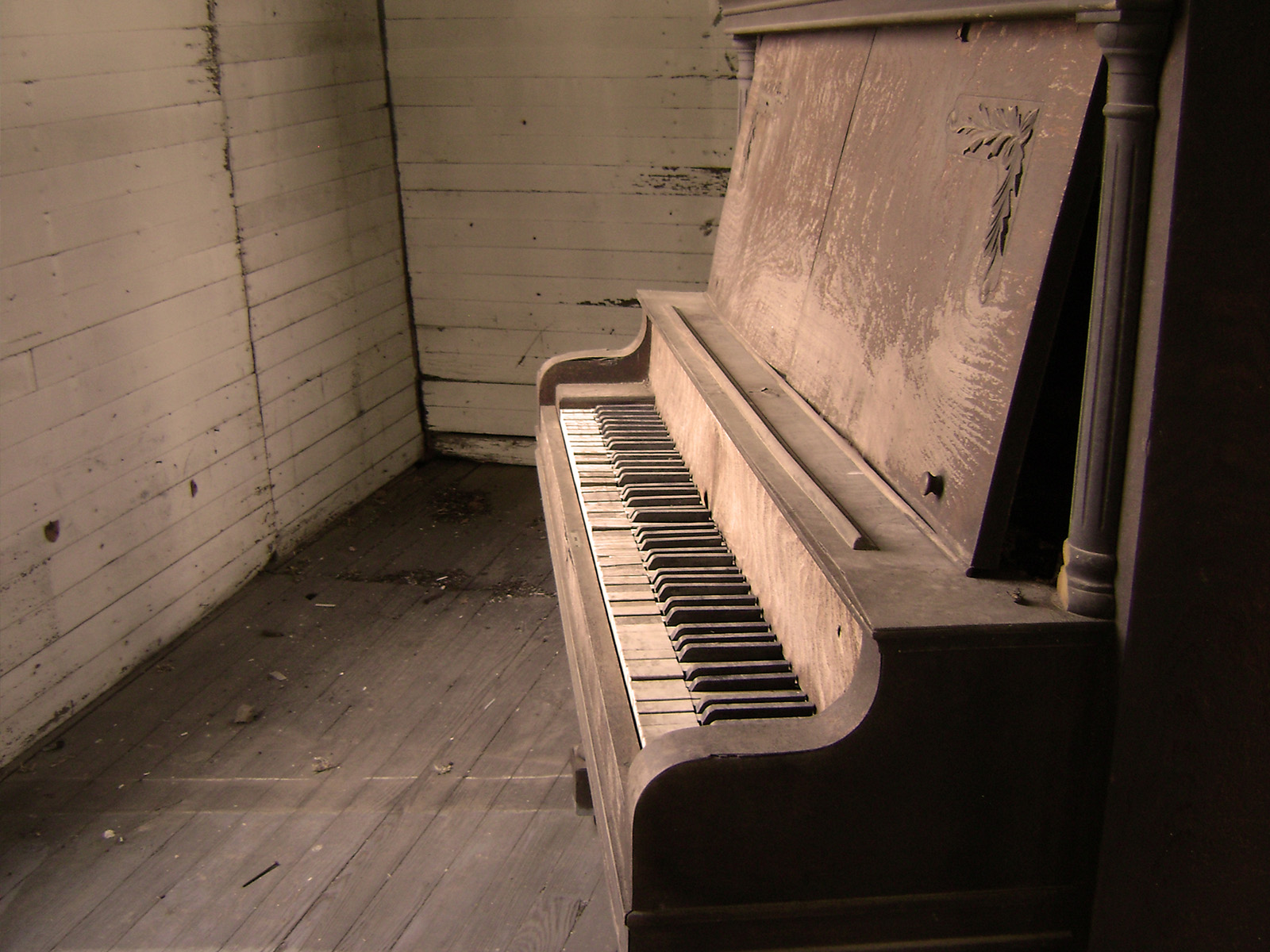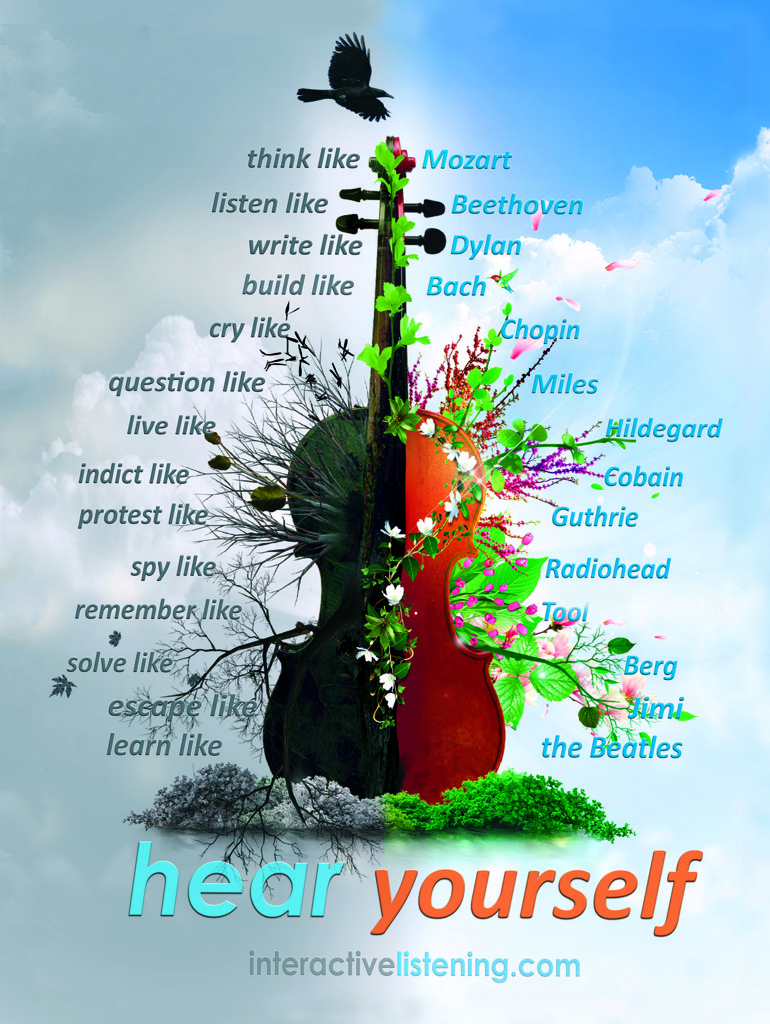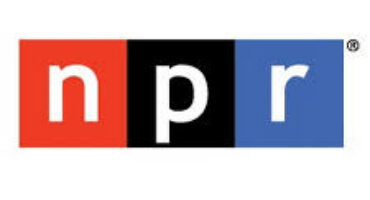what is interactive listening?
Music education designed by teachers for an interactive classroom experience using the edge of technology. For the first time, students can discover music while they read, not after. For the first time listeners can get instant feedback about their listening skills with over 50 automated quizzes throughout the book. This music iBook also attempts to create visual relationships with the sound of music. In recent MRI scans, musicians brains have been shown to use the visual area of the brain more than non-musicians. In this new approach to music, students have a textbook that asks them to see music as much as they hear it.
change music history and education
Why has music been written in caves, ships, and cathedrals in every corner of the human Odyssey? Interactive Listening was designed by two music professors to test your ears, eyes, and mind in an experiential search for the truth about what music really is. Use technology to chase the truth about real music history. Interactive Listening reverses the educational process of traditional music by building active classroom experiences that replace passive learning. At the intersection of music history, music appreciation, and musical language, Interactive Listening is designed as a comprehensive overhaul to the music classroom, band rehearsal, or concert listening experience. Students will understand the roles of each instrument, musical elements, counterpoint, and cultural depth of music that is often overlooked in the traditional textbook process. Click here to find us on iTunes
use technology
For the first time, students can discover music while they read, not after. For the first time listeners can get instant feedback about their listening skills with over 50 automated quizzes throughout the book. This music book also attempts to create visual relationships with the sound of music. In recent MRI scans, musicians’ brains have been shown to use the visual area of the brain more than non-musicians. In this new approach to music, students have a textbook that asks them to see music as much as they hear it. When music teachers or conductors communicate, they wave their hands in visual space. Shouldn’t listeners be learning to hear music in this same part of the brain?
tools to help teachers
The Enhanced Digital edition offers 230 pages of videos, interactive pictures, interactive quiz questions, over 120 built in music samples and more exciting content is now available on iTunes for $14.99. Music history and music appreciation are often a music teacher’s most difficult class. The traditional music textbook model offers little engagement for music students in the classroom. This textbook creates a set of tools and a new path through the woods of music history. Visit the Teacher’s Lounge for more tools and resources.












